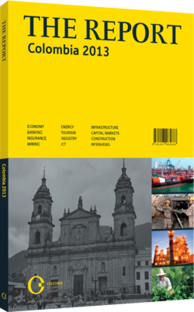Martín Carrizosa, Partner, prietocarrizosa, on the Pacific Alliance

Global trends suggest that, despite the economic downturn in Europe and the US, the middle class of the world will double in the next decade. Some argue it might even triple in the next 20 years. This rise is perhaps the key feature of today’s economic landscape. Imagine the colossal human effort required to create a global middle class of nearly 5bn people in just two decades, and the countless opportunities in terms of trade and investment that lie ahead.
And where is that transformation expected to happen? Needless to say, the answer is not in Europe or the US, but mainly in the Asia-Pacific region and, to a lesser extent, in Latin America. The usual suspects come to mind: China, India and Brazil, but new actors such as México and Colombia will also become driving forces of this phenomenon.
The World Bank believes that in the past decade, the middle class in Latin America has hit historic highs, now representing about 30% of the total population. Sustained economic growth, low inflation rates, more effective taxation, higher-quality education and job creation explain this progress.
Colombia is a good example. Verging on failed state status 10 years ago, the country has since shown considerable development in order to achieve recognition as an outstanding success story. A sequence of good government policies, enhanced security and strong private leadership has allowed Colombia’s economy to grow faster than the region’s average and expand its middle class by almost 50%.
With a population of 45m, Colombian consumers demonstrate modern consumption patterns and have growing spending power. Colombia also benefits from vast natural resources, a diversified economy, a skilled workforce and a strategic location. What other country in Latin America can rightfully claim to belong to the Caribbean, the Andean and the Pacific regions? Colombia is at the crossroads of the Americas and is a key connection between Asia and the Asia-Pacific region and the major markets in Canada and the US.
With trade agreements in place with the US and Canada, among others, Colombia emerges as an ideal platform to access those countries. For Chinese or Indian companies, investing in Colombia to produce goods or services for markets in North America represents a brilliant opportunity. Or alternatively, how about investing in the vast Colombian altillanura, an ideal area for agriculture, in order to meet the growing demand for food in China and India?
With these factors in mind, the Pacific Alliance (Alianza del Pacífico) is a joint effort by Chile, Colombia, México and Perú – all countries with a Pacific coast – to work together towards achieving more integration, trade and investment. Representing a market of more than 215m consumers and a combined GDP of $1.88trn (est. 2011), no wonder many consider this alliance as the most promising in Latin America.
Experts agree that the partnership is an effort to counterbalance protectionism in Brazil and Argentina, as well as populist tendencies in Venezuela and other nations in the region. However, more importantly, it is a clear recognition of the shared views on democracy, free enterprise, rule of law and economic responsibility. Moreover, the alliance promises to increase the dynamism of each country’s private sector, as shown by the surge of “ multilatinas” – Latin American companies starting to behave as true multinationals, with a growing presence in the region and beyond. The Mercado Integrado Latinoamericano, the integrated stock exchange markets of Chile, Colombia and Perú, also aims to boost cooperation.
In a nutshell, the Pacific Alliance is a farsighted initiative that will allow its members to take advantage of the complementarities of their economies, while instantly creating the ninth-largest economy in the world. Size matters, especially when attracting foreign investment or doing business with Asia and the Asia-Pacific region. The next two decades should be a period of prosperity for Latin America and particularly Colombia. This alliance is clearly a leap forward.
You have reached the limit of premium articles you can view for free.
Choose from the options below to purchase print or digital editions of our Reports. You can also purchase a website subscription giving you unlimited access to all of our Reports online for 12 months.
If you have already purchased this Report or have a website subscription, please login to continue.

